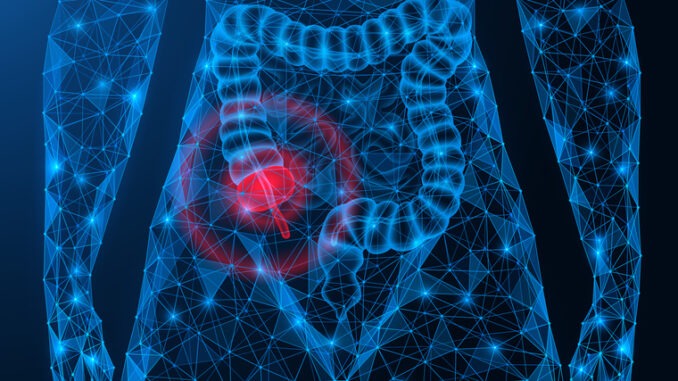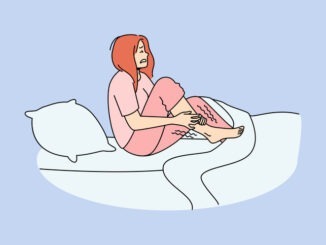
Dr Paul Lambden on the symptoms, diagnosis and treatment of appendicitis
‘McBurney’s Point’ is. in fact. the precise place at which to insert a scalpel when removing the appendix; it lies one third of the way up a straight line drawn from a point on the hip to the umbilicus on the lower part of the abdomen. Now you know! ‘McBurney’s Point’ is named after the American surgeon, Charles McBurney, who first suggested it in 1889.
The appendix is a thin, blind-ended, tubular structure, about three to four inches long, which is normally located on the lower right side of the abdomen at the junction of the small and large intestines. Its function remains obscure. Until relatively recently it was thought to be ‘vestigial’ – that is, it has become small over time, and has lost its function during the process of evolution.
Its function is thought to be to aid digestion of cellulose in ungulates, such as cows; however, more recently, it has been suggested that it might be a reservoir for ‘good’ bacteria, and lymphoid tissue has also been identified which might suggest some sort of immunological function. The removal of the organ does not seem to result in any form of ill-health, or confer any disadvantage on anyone who has undergone the operation.
Even the precise cause of appendicitis is not fully understood, but it is perceived wisdom that some sort of obstruction of the tube at its junction with the intestine results in an overgrowth of bacteria contained in it. Such obstruction may result from hard faeces, inflammatory bowel disease or, possibly, virulent infections. As a result, an abscess develops in the appendix and the sufferer develops the features of appendicitis.
Symptoms and diagnosis
Symptoms may, initially, be vague and early features may include:
- central abdominal pain;
- loss of appetite;
- low-grade temperature of half a degree C or so.
Subsequently, the person may:
- feel nauseated;
- vomit;
- experience constipation or diarrhoea.
Over time the pain may move from the centre of the abdomen to the lower right side.
The diagnosis is made by examination of the abdomen, where palpation reveals, not only tenderness, but also ‘guarding’ – where the abdominal wall is held rigid as it is pressed – and ‘rebound tenderness’ where the pain is exacerbated if the pressure on the abdomen is suddenly released. There may be a characteristic smell on the breath and it may also be necessary to undertake a rectal examination when tenderness is found on the right side.
In cases where the diagnosis is uncertain blood tests may be used to identify signs of infection. Occasionally, where the diagnosis remains obscure, it may be necessary to carry out a CT scan to visualise the appendix.
Treatment and recovery
Almost invariably the treatment of appendicitis is to remove the appendix surgically. This may be done by an open procedure involving a one-to-two inch incision over McBurney’s Point; however, it is increasingly done laparoscopically, which leaves virtually no scar.
Usually the appendix appears inflamed and swollen but, on occasion, it appears to be healthy. Under normal circumstances, the surgeon will still remove it because it is a simple procedure and it removes the risk of appendicitis in the future.
Sometimes – for example, when there is a virulent infection, or when diagnosis or treatment is delayed – the appendix may burst allowing the infection to spread into the abdominal cavity causing an abscess around the appendix as the body attempts to seal off the infection to stop it spreading. If the infection is not localised, and it spreads through the abdomen, it causes the development of peritonitis.
Sometimes patients experience a ‘grumbling appendix’. This is, in fact, a subacute appendicitis which can produce non-specific abdominal pain, with little in the way of severe or localising features, and which may be associated with degrees of intermittent obstruction. Such attacks may settle without intervention but, if they are recurrent and appendicitis is suspected, the appendix may be removed to eliminate the risk that a subsequent attack may be more acute.
Following surgery the time to complete recovery is about four-to-six weeks, although it is usually more rapid if the surgery is undertaken laparoscopically. No special precautions are required in respect of diet or activity once the healing is complete.
Although appendicitis is a medical emergency recovery is usually rapid following an appendicectomy and complications only arise in circumstances where there has been delay in diagnosis and spread of infection, or where the patient is debilitated for other reasons, such as heart or lung disease.
With somewhere between five and seven percent of patients having their appendices removed, it remains one of the most commonly performed operations.


Be the first to comment